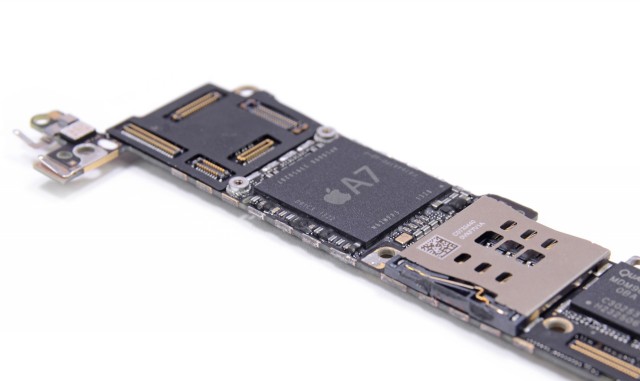
A jury has found Apple's A7 and A8 chips violate a patent belonging to the licensing arm of the University of Wisconsin, and the world's richest smartphone maker is now on the hook for up to $862 million in damages.
The Wisconsin jury reached a verdict on Monday that Apple infringed US Patent No. 5,781,752, and the trial now enters a separate damages phase. The patent is owned by Wisconsin Alumni Research Foundation, a university patent-licensing organization that was suing over patents before it was cool.
WARF sued Sony over patents in 2003, and both IBM and Samsung in 2004. It asserted the same patent Apple was found to infringe to sue Intel in 2008, but the case settled just before trial the following year.
In this case, WARF said the '752 patent improves the A7, A8, and A8X chips Apple uses in newer iPhones and iPads. Now that the jury has found Apple liable, it will decide on damages; in earlier orders, US District Judge William Conley has written that the maximum in damages that can be claimed is $862.4 million. A third phase of the trial will determine whether Apple was a "willful" infringer; if so, damages could be tripled. If both the damage and wilfulness phases go poorly for Apple, it could be a record-breaking verdict.The '752 patent, issued to four University of Wisconsin computer scientists in 1998, "has been recognized by those in the art as a major milestone in the field of computer microprocessing," WARF lawyers wrote in their complaint (PDF) filed last year.
A second WARF v. Apple lawsuit was filed in September, citing the same patent to demand royalties on the A9 and A9X processors used in Apple's iPhone 6S, iPhone 6S Plus, and iPad Pro.
WARF has been a controversial patent holder, particularly with its patents on stem cells, which critics say were used to limit research. Beginning in 2006, those patents underwent a series of legal challenges brought by Consumer Watchdog and the Public Patent Foundation. The patents' power was narrowed, but they were ultimately upheld. The Supreme Court declined to hear a case on the WARF stem cell patents earlier this year.
Regardless of how the damages phase turns out, the WARF v. Apple verdict is likely to encourage more universities to turn to using their patents in court to seek revenue. The number of patent lawsuits filed by universities has increased since Carnegie Mellon University won a $1.17 billion verdict against Marvell Semiconductor in 2012. Only $278 million of CMU's win was upheld on appeal.
reader comments
194